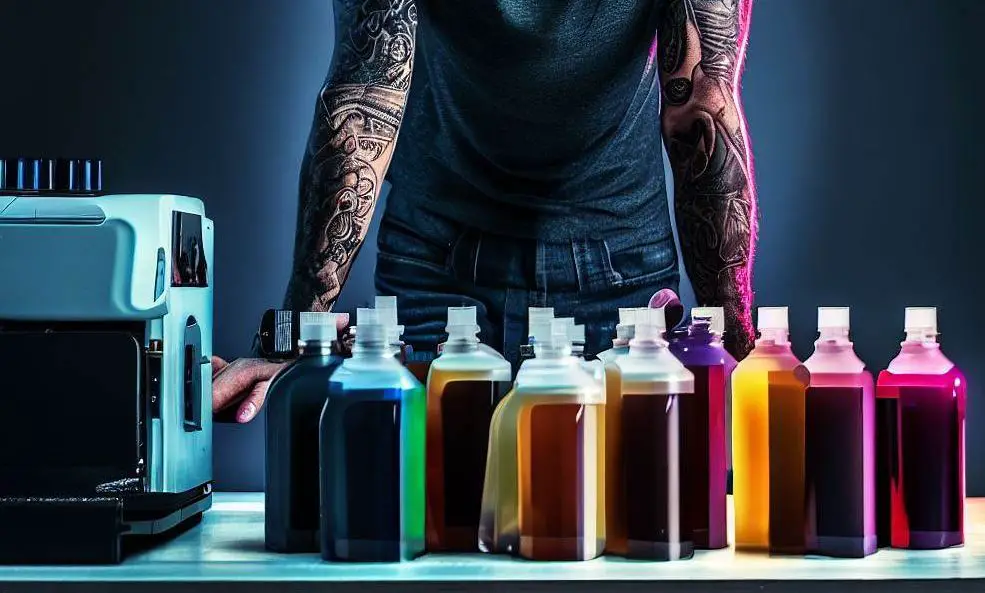If you are wondering can you mix sublimation ink brands, I have bad news – the answer is no.
Mixing different brands of sublimation ink is not recommended since every brand has a specific formula that is designed to work with different printers and materials.
Using different brands of ink can cause problems with your printer, such as clogging, and can negatively affect the final print’s color and image quality.
Generally speaking, it’s best to use the same brand of ink for consistent and high-quality prints.
In this post, I’ll talk about why it’s not a good idea to mix sublimation ink brands.
The Basics Of Sublimation Ink
Sublimation ink is a special type of ink designed for use with printers. It is a dye-based ink that is designed to transfer onto a variety of materials, including polyester, ceramics, etc…
Also Read: Why Does Black Sublimation Look Brown?
There are many different brands of sublimation ink available on the market, each with their own unique formula and characteristics. Some of the most popular brands include:
- Sawgrass
- Epson
- SubliJet
- Printers Jack
- Hiipoo
Every sublimation ink brand is often specifically formulated to work with a particular type of printer and paper.
Mixing different brands can cause problems with the print quality, such as color distortion, clogging, and even damage to the printer itself.
Plus, different ink brands may have different properties, like drying time, color vibrancy, and resistance to fading.
Why Is Mixing Sublimation Ink Brands Risky?
There are some significant risks that come with mixing sublimation ink brands, some include:
Color Inconsistencies
Each brand of ink is formulated differently, so mixing them can result in unpredictable color shifts and inconsistencies in your prints.
Clogging Print Heads
If the ink from different brands is not compatible, it can cause clogs in your printer’s print heads, which can be difficult or impossible to clear.
Reduced Print Quality
Mixing different brands of ink can result in lower print quality, including reduced sharpness, contrast, and vibrancy.
Also Read: Why is My Black Sublimation Turning Green?
Even ink of the same brand but from different batches should be avoided when possible. Different batches of ink can have slight variations in their composition, which can lead to inconsistencies in print quality.
If you need to use multiple colors, it is best to purchase sublimation inks of the same brand and color.
Potential Benefits And Mixing Tips

If you know what you are doing and is a expert, you could try mixing them (I don’t recommend tho) – and there are benefits to it too like:
- Creating custom color blends that are not available from a single brand
- Reducing costs by using leftover ink from multiple brands
- Combining the strengths of different brands to achieve better print quality
If you just wanna try it – here are some tips:
Using the Same Type Of Ink
If you plan on mixing sublimation ink brands, it is important to use the same type of ink.
For example, if you are using dye-sublimation ink, you should only mix it with other dye-sublimation inks.
Mixing different types of sublimation ink will most probably result in poor print quality.
Testing The Ink Brands
Before mixing sublimation ink brands, it is important to ensure that the inks are compatible with each other – this can be done by performing a simple compatibility test.
To test the compatibility of the inks, apply a small amount of each ink to a piece of transfer paper and allow it to dry.

Once the ink has dried, check for any signs of separation or color bleeding. If the inks appear to be compatible, you can proceed with mixing them.
Mixing Them
If you have determined that the sublimation ink brands are compatible, you can mix them.
To mix the inks, start by adding small amounts of each ink to a mixing cup or container. Stir the inks together thoroughly and test the color on a piece of transfer paper.
Keep adding small amounts of ink until you achieve the desired color.
Be sure to record the amounts of each ink used so that you can reproduce the color in the future.
Bottom Line
Mixing sublimation ink brands is not recommended since each brand has its own specific formula that is designed to work with their own printers and paper.
It can cause problems with your printer, such as clogging and printer malfunctions. Additionally, mixing sublimation inks can result in poor quality prints and color effects.
Overall, while you could mix ink brands, the risks and potential negative consequences outweigh them. So stick with a single brand of ink.

